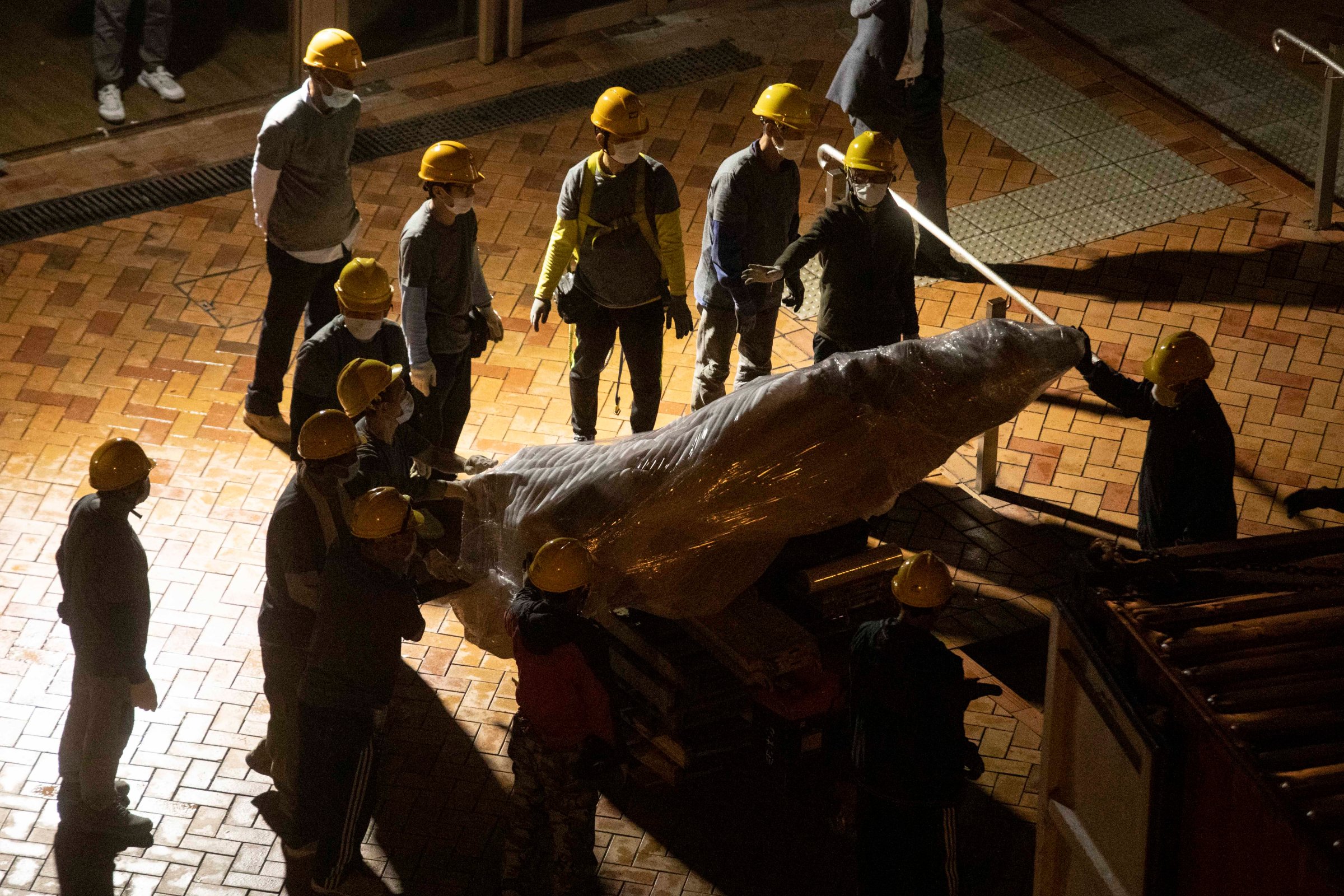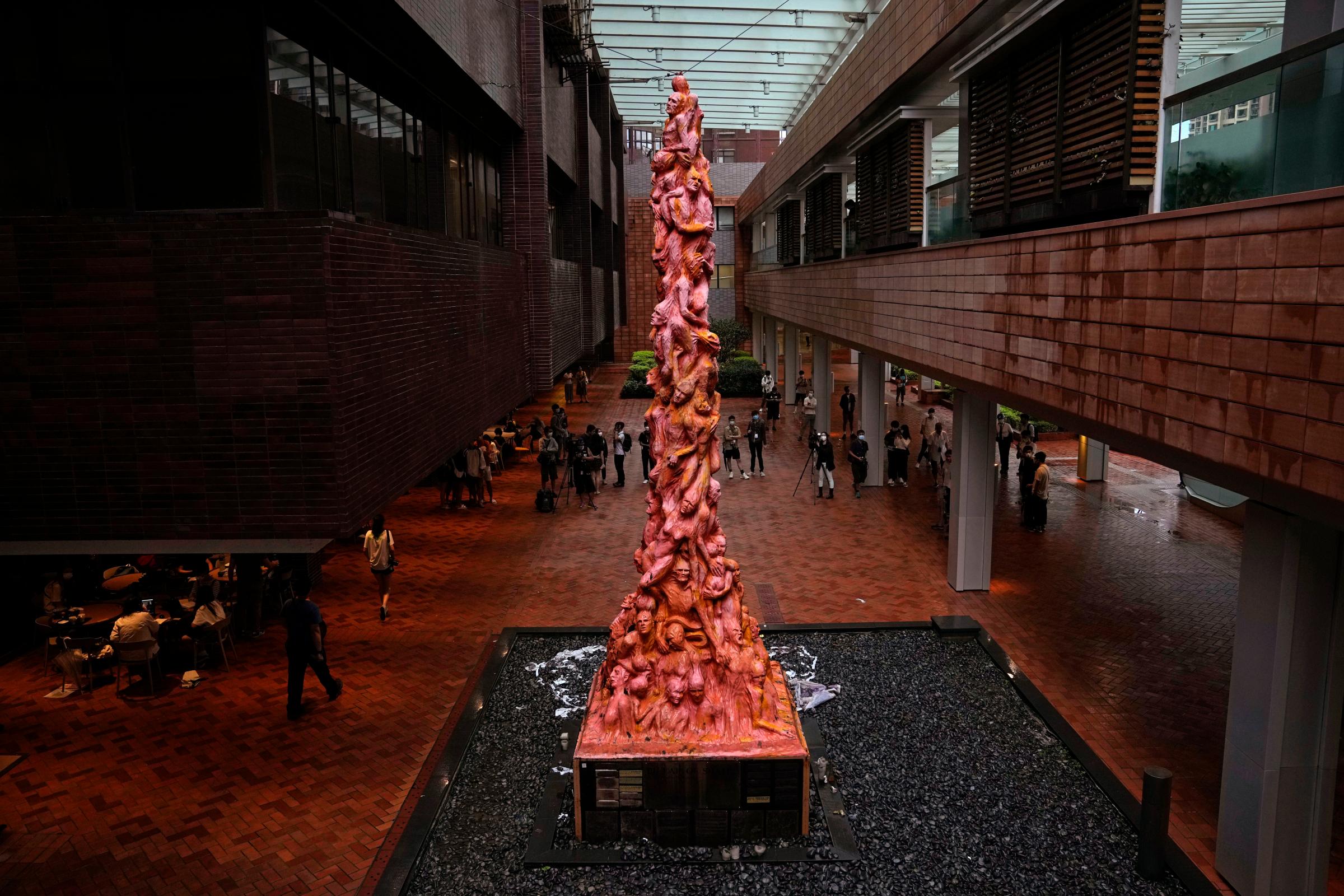
After months of debate over what to do with the Pillar of Shame, a statue commemorating the victims of the Tiananmen Square massacre on the campus of the University of Hong Kong, workers arrived in the middle of the night—dismantling and removing it.
Reports started circulating on social media late Wednesday that security guards had erected plastic sheets and barricades around the statue and that construction work could be heard going on. Videos on social media showed the top being wrapped up and carried away, while the base was removed by crane.
Since its 1997 handover from British colony to semi-autonomous Chinese territory, Hong Kong had been one of the only places in China that openly marked the events of June 4, 1989—when tanks rolled into Beijing’s Tiananmen Square and left what is believed to be hundreds, if not thousands of protesters, dead in a violent crackdown by the Chinese Communist Party.
More than 180,000 people were estimated to have gathered in Hong Kong’s Victoria Park in 2019 to commemorate the 30th anniversary of the crackdown. But following massive anti-government protests that year, Beijing has tightened control over Hong Kong. Caught up in the clampdown: Commemorations of the Tiananmen massacre.
Dozens of pro-democracy figures are behind bars and many civil society groups, including the group that organized the annual Tiananmen vigil, have disbanded. The world’s only Tiananmen museum closed earlier this year over licensing issues.
The Tiananmen commemoration event has been banned for the last two years, with officials citing COVID-19 restrictions—although other large events have been allowed and nightclubs had been allowed to reopen a month before this year’s anniversary.
More from TIME
In December, eight activists were sentenced to jail for participating in the banned vigil, including media tycoon Jimmy Lai, who was given a 13-month jail sentence over charges that he incited others to take part in an unlawful assembly. Other prominent democracy figures like Albert Ho , the former chairman of the group that organized the annual gathering, have been jailed on charges relating to protests in 2019.

A day after the Pillar of Shame was removed Hong Kong’s Lingnan University removed a Tiananmen related wall relief and the Chinese University of Hong Kong (CUHK) tore down its Goddess of Democracy statue, which was inspired by a monument erected by student protesters at Tiananmen Square in 1989.
HKU confirmed the removal of the orange-colored statue, which depicts corpses piled on top of each other, in a statement issued Thursday. It said that approval was never granted to display the statue—which was erected in a prominent spot on campus more than 20 years ago—and that it had been put in storage. The university also said it was “very concerned about the potential safety issues resulting from the fragile statue.”
The university had requested that the 26-foot statue be removed from its campus in October—sending a letter to a now disbanded civil society group that organized annual candlelight vigils to mark the Tiananmen Square massacre in Hong Kong. The request sparked protest and the law firm Mayer Brown, the university’s legal representative, withdrew from the case after facing international pressure.
Jens Galschiøt, the Danish sculptor who made the statue, said in a statement that he was shocked by its removal, and that he’d been trying to contact the university for several weeks to move the sculpture. “It is a disgrace and an abuse and shows that Hong Kong has become a brutal place,” he said.
More Must-Reads from TIME
- Introducing the 2024 TIME100 Next
- The Reinvention of J.D. Vance
- How to Survive Election Season Without Losing Your Mind
- Welcome to the Golden Age of Scams
- Did the Pandemic Break Our Brains?
- The Many Lives of Jack Antonoff
- 33 True Crime Documentaries That Shaped the Genre
- Why Gut Health Issues Are More Common in Women
Write to Amy Gunia at amy.gunia@time.com